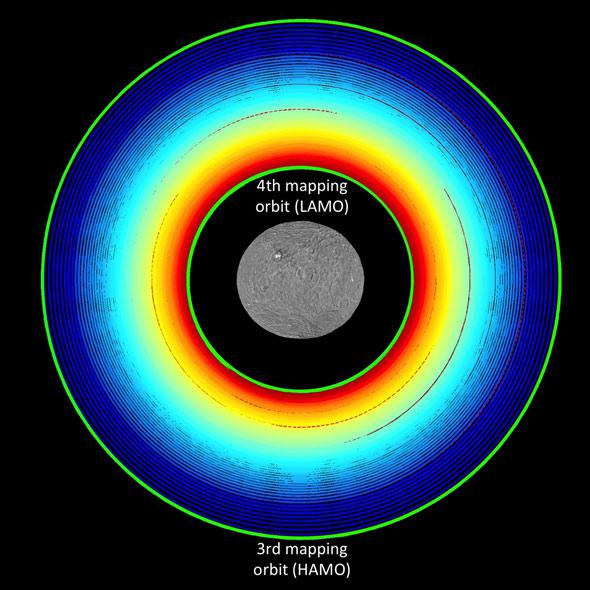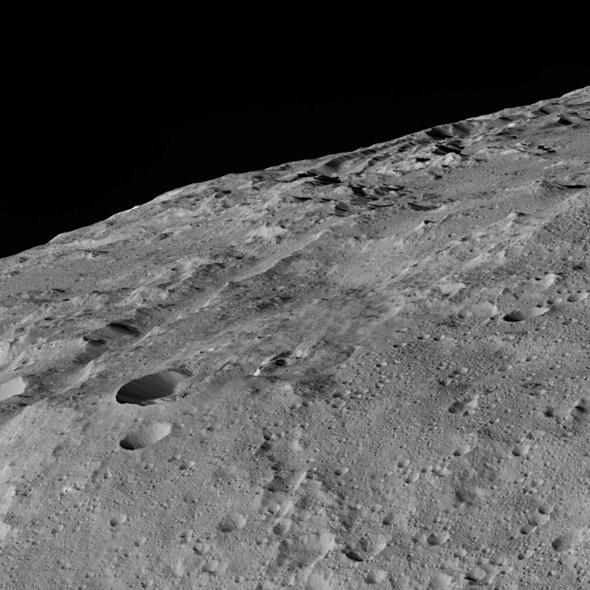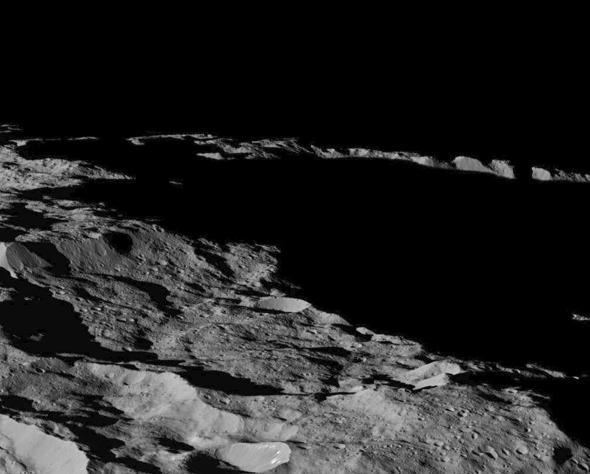Well, this is something I’ve been waiting for a very, very long time: The Dawn spacecraft is in its final, lowest mapping orbit of the protoplanet Ceres, and is now returning the highest-resolution images of the mission!
A recap: Dawn launched in September 2007 (after a long and difficult process just to get there; it was even canceled at one point!) and headed into the main asteroid belt between Mars and Jupiter. Its targets: Vesta and Ceres, the two most massive objects in the belt, big enough to be considered protoplanets, worlds that were already becoming planets when they ran out of material to use to grow (the leftover rubble is what we call “asteroids”).
Though large for their kind, Ceres and Vesta are still relatively small (950 and 530 kilometers wide, respectively) and have weak gravity. Going into orbit around them didn’t require powerful chemical rockets to decelerate as most missions to planets need. Instead, Dawn uses an ion engine that generates extremely low thrust but can do so for months.
After orbiting Vesta for a year, Dawn broke free and headed for Ceres. After a three year trip, in late 2014 it was on approach and saw Ceres as little more than a dot. Within a few weeks Ceres was fuzzy but getting interesting, and animations of it showed it rotating and hinted at interesting features, including bright spots that may be salt deposits left over from briny water ice leaking out of the world’s interior.

Drawing by NASA/JPL-Caltech
Dawn entered a high orbit around Ceres in March 2015, and began its science mapping of the surface. Three times since then it’s used its ion drive to slowly lower its orbit, spiraling down closer to the surface. In December 2015 it reached its final, Low Altitude Mapping Orbit: It now circles Ceres just 385 kilometers (240 miles) above its surface. That’s lower than the International Space Station orbits the Earth!
It can now see objects as small as 70 meters across on the surface, smaller than an American football field (and far smaller than objects you can see on the Moon from the Earth even using big telescopes without very sophisticated observing techniques).
The result? Well, the images in this very article, of course. The one at the top of this post is my favorite so far of the new ones released; it shows the horizon of Ceres near the south pole. You can see that the surface is saturated with craters, and there are long shadows due to the Sun being so low.
One crater near the bottom has more of those brighter marks on its rim that may be salt deposits. More than 100 spots like this have been mapped on Ceres, and strongly imply there’s a lot of water ice under the surface. Ceres has a low density for such a large object—just over two grams per cc, when most of the largest asteroids are more like three g/cc—so it must have plenty of water ice mixed in with the rock, perhaps even a mantle of ice under the crust.

Photo by NASA/JPL-Caltech/UCLA/MPS/DLR/IDA
The image above shows a region at midsouthern latitude, and you can see a long trough called a graben cutting through the surface. Is it a crack from a giant impact that partially shattered the surface? Or is it seismic, caused by contraction of the crust as Ceres cooled? Perhaps there are other possibilities (there almost always are). And now that Dawn is so close to Ceres it can practically kiss it, scientists on Earth are finally getting the close-ups they’ve anticipated for eight long years.
And don’t forget: We’ll get nice new images of the biggest of the bright spots, the ones in Occator crater, soon. What will we see when we see them from this altitude?
Stay tuned. Ceres is the largest leftover piece from the formation of the solar system that we’ve seen up close, and now we’re seeing it from closer than ever.
